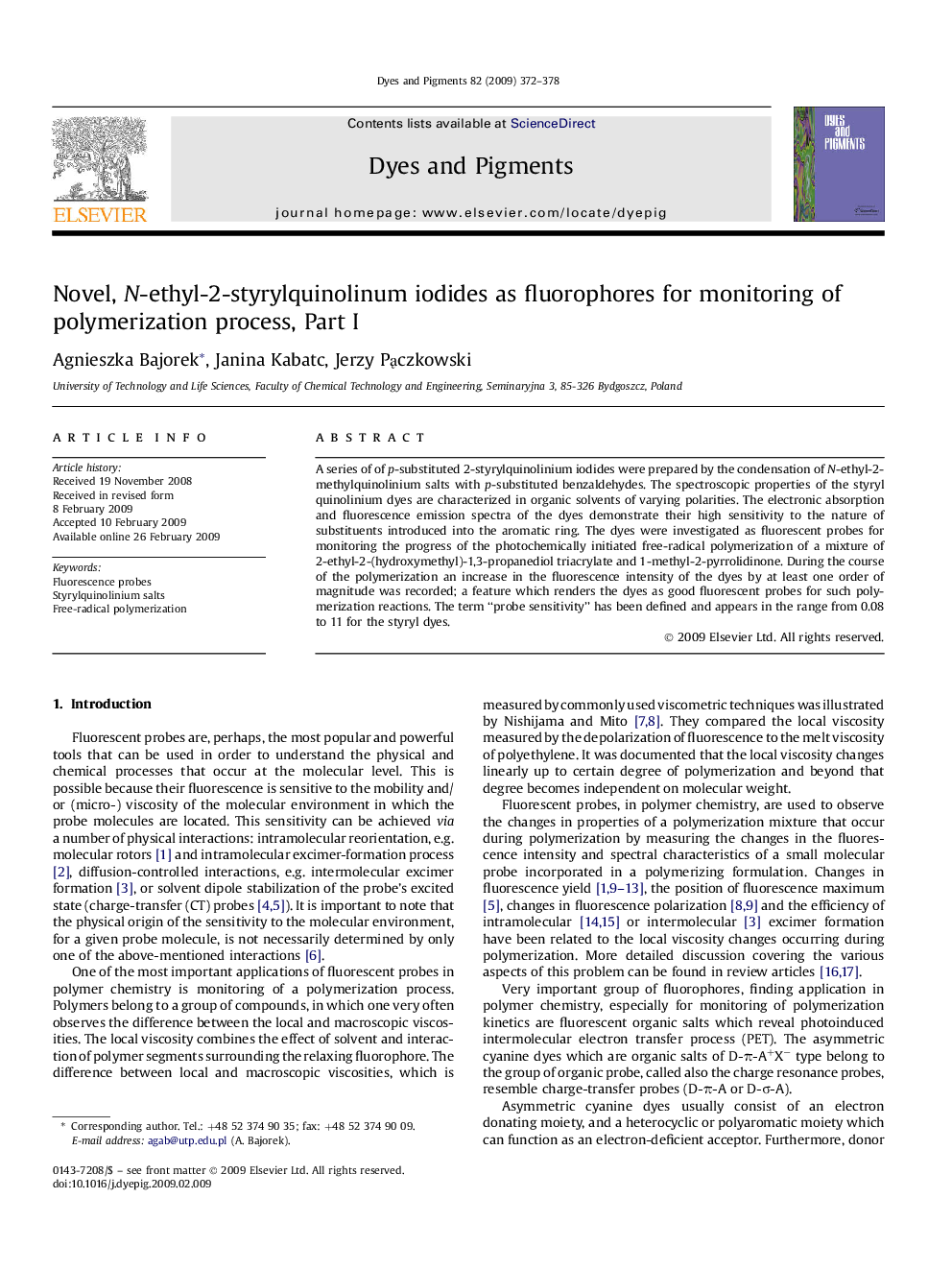| Article ID | Journal | Published Year | Pages | File Type |
|---|---|---|---|---|
| 177916 | Dyes and Pigments | 2009 | 7 Pages |
A series of of p-substituted 2-styrylquinolinium iodides were prepared by the condensation of N-ethyl-2-methylquinolinium salts with p-substituted benzaldehydes. The spectroscopic properties of the styryl quinolinium dyes are characterized in organic solvents of varying polarities. The electronic absorption and fluorescence emission spectra of the dyes demonstrate their high sensitivity to the nature of substituents introduced into the aromatic ring. The dyes were investigated as fluorescent probes for monitoring the progress of the photochemically initiated free-radical polymerization of a mixture of 2-ethyl-2-(hydroxymethyl)-1,3-propanediol triacrylate and 1-methyl-2-pyrrolidinone. During the course of the polymerization an increase in the fluorescence intensity of the dyes by at least one order of magnitude was recorded; a feature which renders the dyes as good fluorescent probes for such polymerization reactions. The term “probe sensitivity” has been defined and appears in the range from 0.08 to 11 for the styryl dyes.
